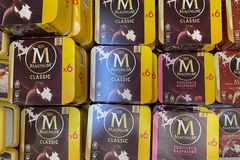
- Industry news
Industry news
- Category news
Category news
- Reports
- Key trends
- Multimedia
- Journal
- Events
- Suppliers
- Home
- Industry news
Industry news
- Category news
Category news
- Reports
- Key trends
- Multimedia
- Events
- Suppliers
“Keeping ingredients as close to nature as possible”: SVZ Director highlights authenticity, traceability and fermented trends at Fi Europe 2019

06 Dec 2019 --- Producer of liquid fruit and vegetable ingredients SVZ International presented its latest innovations at Fi Europe 2019, which was held from December 3 to 5 in Paris. The company offers ingredients that are minimally processed, traceable, authentic and true to nature. Johan Cerstiaens, Commercial Director SVZ, highlighted the company’s newest concepts, including a chunky puree range and honeyberries – which are pegged as the next nutrient-rich superfruit. He also highlighted fermented and clean label trends as key industry influencers. “We do not interfere with nature, and we keep our ingredients as close to nature as possible,” he tells FoodIngredientsFirst from the show floor.

Minimally processed ingredients: chunky puree
At Fi Europe 2019, SVZ presented its chunky puree with different fruits and vegetables. The chunky puree is a new range of minimally processed ingredients that retain pieces of real fruit within a rich, high-quality puree. It also showcased its other offerings of traceable, high-quality fruit and vegetable juices and concentrates.
“The chunky puree has a more authentic mouthfeel than standard purees,” Cerstiaens notes. “It brings more of a homemade and rustic feel to the product. For example, if you were to make a smoothie or a puree at home, it might still contain some small chunks. This is what we want to achieve on an industrial scale – bring more natural products with authenticity and with even more freshness,” he says.
A good mouthfeel in a puree like this is the most important attribute, according to Cerstiaens. “It’s not too chunky, but just enough that you have a very natural feel and you would be able to drink it through a straw,” he notes.
“We have already had a positive reaction from dairy and yogurt makers, as well as smoothie markets, who are looking for a good mouthfeel, and more richness and texture,” Cerstiaens explains.
The new range allows dairy, ice cream and dessert producers to create the 100 percent natural, authentic, clean label products consumers increasingly demand, notes the company.
“We are hoping to tap into the premium chilled category because we want to bring freshness to juices, beverages, soups and so on,” adds Cerstiaens. In the meantime, SVZ is focusing its efforts on European markets, where Cerstiaens sees significant potential.
 SVZ also presented the honeyberry, which the company has pegged as “the next nutrient-rich superfruit.”Healthy, tasty and blue: meet the honeyberry
SVZ also presented the honeyberry, which the company has pegged as “the next nutrient-rich superfruit.”Healthy, tasty and blue: meet the honeyberry
SVZ also presented the honeyberry, which the company has pegged as “the next nutrient-rich superfruit.” This tiny, tasty, tart berry is seeing new interest across the food and beverage market, reports the company. The honeyberry can be eaten fresh or in desserts, ice cream and preserves, and its rich tartness – with a taste that has been described as a cross between a blueberry, blackberry and raspberry – has the potential to be used as a filling for baked goods, or in premium beverage and dairy applications, SVZ notes.
Also called the haskap berry, or fly honeysuckle, the honeyberry is an oblong berry that is similar to the blueberry in both taste and appearance – but it boasts many more health benefits. Not only is it full of antioxidants, but it has twice the vitamin A and four times the vitamin C as blueberries. The honeyberry also has the highest content of phenolic acids and anthocyanin of the berries that SVZ grows, and also contain significant sources of potassium, calcium, phosphorus and iron.
“When we started to look into the honeyberry, we saw a potential for our farmers and large-scale industrial production,” Cerstiaens notes. “From a harvesting point of view, the honeyberry is future proof,” he continues. “It can be mechanically harvested farmers in Poland and Ukraine. Right now, we are working with our Polish farmers, and then we will see if we can expand our base or not.”
“The color is also very striking and it contains a lot of vitamin C, so it’s packed full of nutrients and is a good crop for production,” Cerstiaens adds. The honeyberry taps into sustainability trends as well as helping local farming communities.
“We want to be a front-runner in sustainability, and for our farmers, the honeyberry is one of those products which we can bring the economy to farmers. There is also a potential for long-term contracting with farms and farmers, which boosts the economy and allows our farmers to invest in machinery for better planting, for example.”
Cerstiaens notes that SVZ wants to help its farmers “professionalize the way they work,” and by having long-term contracts in place, this opens doors to doing so.
“We are a company owned by farmers and we have always been farmer-based,” Cerstiaens explains. “Sustainability is at the core of our business, but until now, we haven’t really talked about it. Of course, we are helping more than 2,000 farmers per year and we have a lot of other projects running that could push that number even further, we want to get that message across to the end-customer,” he notes.
Fermented opportunities
SVZ is diving deeper into fermented ingredients and how they might help with taste profiling or increasing vitamin content, Cerstiaens highlights.
“The fermented food trend has been ringing a bell for some time,” he says. “For example, you can often keep a label clean by using fermented ingredients, which can help with extending shelf life in an entirely natural way,” Cerstiaens explains.
From a taste profile perspective, fermented ingredients can offer a fresh taste, and for SVZ, it is a way to expand the company’s product portfolio. “The dairy and juice markets are a key focus area for us in this space, and we are listening to the demands from those markets,” Cerstiaens concludes.
By Elizabeth Green, with additional reporting from Gaynor Selby in Paris.










